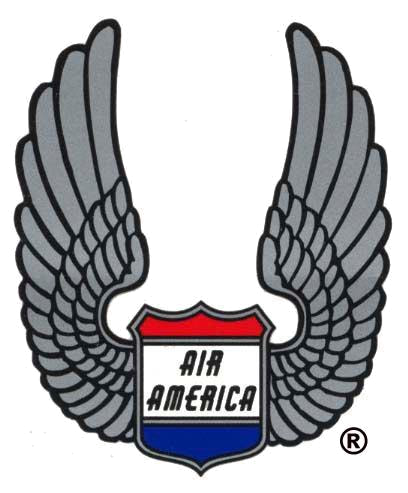In Remembrance of Ron Sutphin
October 25, 2007
In Memoriam: Ron Sutphin, CAT and Air America® Pilot
Ron Supthin, who helped introduce STOL aviation to Southeast Asia, and who logged over 40,000 hours during a long, varied, and highly accomplished aviation career, died in a plane crash on his ranch in eastern Oregon on October 3, 2007. During his life, the aircraft he flew ranged from Stearman biplanes to F-86 and F-100 combat jets to 747s.
Though not a gregarious man, he was liked and highly respected by those he flew for, including Robert Rousselot of CAT and Air America®, Gen. Heinie Aderholt of the U.S. Air Force, and Bill Lair of the CIA.
Ronald J. Sutphin was born in modest circumstances in rural Virginia, in the Blue Ridge region. In 1947 he enlisted in the Marines. In his spare time, he took college correspondence courses as well as private flying lessons. When he was transferred from Camp Pendleton, California, to Quantico, Virginia in 1950, he flew himself across country in his own Piper Cub. By the time he began a naval aviation cadet program in 1952 he already had his multi-engine transport rating and was a flight instructor on weekends.
He flew combat missions in the Korean war, and learned to speak basic Korean. (Later he would speak basic Lao and would become fluent in Japanese.) While he continued to fly in the naval reserve, the G.I. Bill paid for his commercial pilot training, and in 1956 he flew for Pan American and then for the smaller Seaboard and Western Airlines, until he finally got the job he wanted in Asia with Civil Air Transport, and later Air America®. His missions included covert flights to Indonesia and resupply flights to Tibet.
He learned to fly the Helio Courier STOL plane from Heinie Aderholt, an Air Force officer on loan to the CIA. Sutphin played a key role in modifying and improving the Helio, as the first models were difficult to fly. He flew Bill Lair of the CIA from Bangkok to Savannakhet, Laos in 1960 on the flight that began Lair's involvement in the Laos war, as well as the involvement of the Thai Paru special- ops unit. He also located Gen. Vang Pao, the Hmong leader, for Lair when the Plain of Jars fell, and from this incident began the CIA's Hmong operation, one of the largest in Agency history.
Sutphin exited the Laos war relatively early, leaving behind stories of his aviation feats, such as flying in the front and out the back of an aircraft hanger with his wings nearly touching the doors, and flying upside down into the Long Tieng valley. Though the stories may or may not have been true, there was little doubt that Sutphin was technically capable of achieving feats of that kind. He was an extraordinarily talented pilot who liked nothing better than testing planes' capabilities without going beyond them (as I discovered for myself when he took me canyon-flying in Oregon; there was a strange sensation of being completely safe, even when one wingtip was nearly touching the boulders on the canyon floor while the other wingtip nearly touched the canyon walls). He was Air America®'s test pilot for several years in the early 1960s before deciding to transition back to commercial aviation. Eventually, he became a 747 instructor pilot for Japan Airlines.
Sutphin met and married his wife, Katarina, when she was a stewardess for FinnAir. He taught her to fly, and she became an instructor pilot in STOL planes such as Super Cubs in Alaska, where the couple spent much of their time. After retiring from JAL, Sutphin had a sideline business of repairing crashed STOL planes in the Alaskan bush, and then flying them out to proper repair facilities, where the planes would be fully refurbished. Both in Alaska and when he bought his ranch in Oregon, he bought and sold STOL planes, and he usually seemed to have three or four of his own. He raised cattle on his ranch in the remote sagebrush country of eastern Oregon, and used his planes to spot and even help herd cattle for the annual roundup. Ron Sutphin was 76 years old when he died. The NTSB has not yet finished its investigation of the accident.
– Roger Warner
In remembering Ron Sutphin I always think of a "Log Book error" story he told me many years ago. For those of you that knew our Chief of Flight Operations, Captain Robert E. Rousselot, you will remember that he was as tough as nails. Someone remarked that Rousselot left the U.S. Marine Corp because it was too soft. Captain Rousselot was "death' on Log book errors. If you made an addition error in filling out the aircraft log book you would receive a personal hand-written note of reprimand from Captain Rousselot. Ron Sutphin was telling me of such a hand-written note he received from Captain Rousselot, that read:
Dear Captain Sutphin, Sad, sad, sad, evidently you can fly, but you can not add. Signed Capt. Rousselot
Ron Sutphin read the letter, and noted that Capt. Rousselot had misspelled the word "evidently". Ron wrote back to Capt. Rousselot:
Dear Capt. Rousselot, Sad, sad, sad, evidently you can add, but you can not spell. Signed Capt. Sutphin


